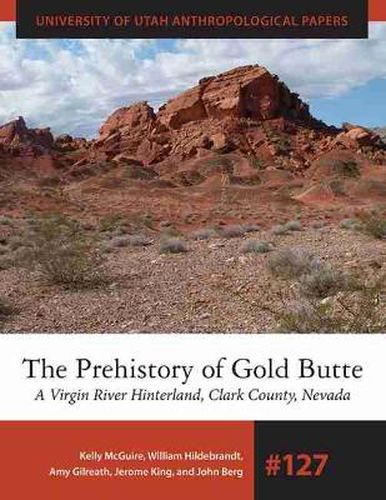The Prehistory of Gold Butte: A Virgin River Hinterland, Clark County, Nevada
Kelly McGuire,William Hildebrant,Amy Gilreath,Jerome King,John Berg

The Prehistory of Gold Butte: A Virgin River Hinterland, Clark County, Nevada
Kelly McGuire,William Hildebrant,Amy Gilreath,Jerome King,John Berg
The Prehistory of Gold Butte uses a theoretical perspective rooted in human behaviour ecology and other foraging models to present the results of one of the largest and most comprehensive archaeological investigations ever undertaken in southern Nevada, involving the systematic survey of more than 31,000 acres, the documentation of more than 377 sites, and the excavation of nine prehistoric sites. Gold Butte-at the crossroads of the Mojave Desert, the Great Basin, and the Colorado Plateau in southern Nevada-has a 12,000-year record of human occupation with archaeological elements that can be traced to all three culture zones.
Dramatic developments occurred in this area of the Desert West. Farmers suddenly appeared in the Virgin River basin about 1,600 years ago. At such iconic sites as Lost City, Main Ridge, and Mesa House, full village and agricultural life developed over the span of a few hundred years only to completely vanish by AD 1250 after a series of droughts and other cultural disruptions. The Patayan held sway for several hundred years, between AD 1100 and 1500, but didn’t advance much beyond the Colorado River corridor. Finally, the Southern Paiute arrived and occupied not only the Virgin River basin and Gold Butte but much of the northwestern quadrant of the Southwest from at least the time of historic contact (AD 1500) to the present.
This mix of cultures illustrates historical contingency, in place development, and external relationships that should be expected along a boundary area such as Gold Butte. By looking at hinterlands adjoining the prehistoric settlements that clustered along the Virgin River corridor before, during, and after the Puebloan period, the authors suggest that changes in settlement- subsistence and lifeways at core settlements along the riverine corridor have corresponding effects on the character and intensity of hinterland occupation.
This item is not currently in-stock. It can be ordered online and is expected to ship in approx 4 weeks
Our stock data is updated periodically, and availability may change throughout the day for in-demand items. Please call the relevant shop for the most current stock information. Prices are subject to change without notice.
Sign in or become a Readings Member to add this title to a wishlist.


